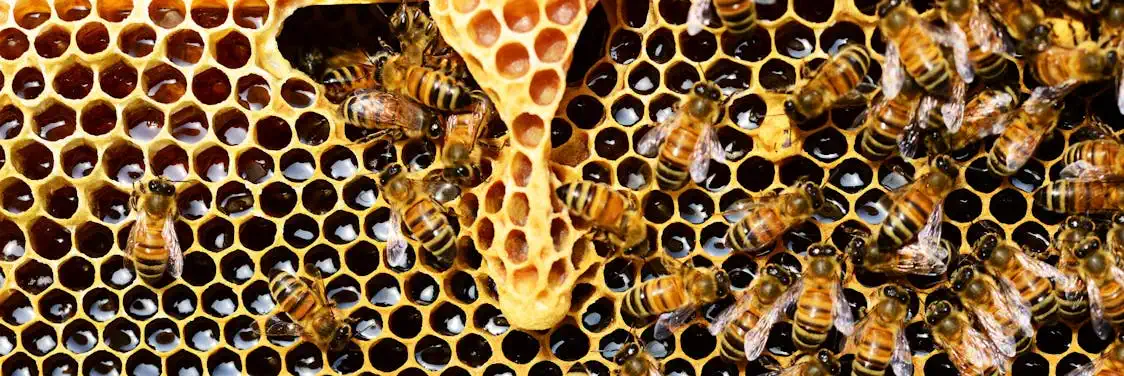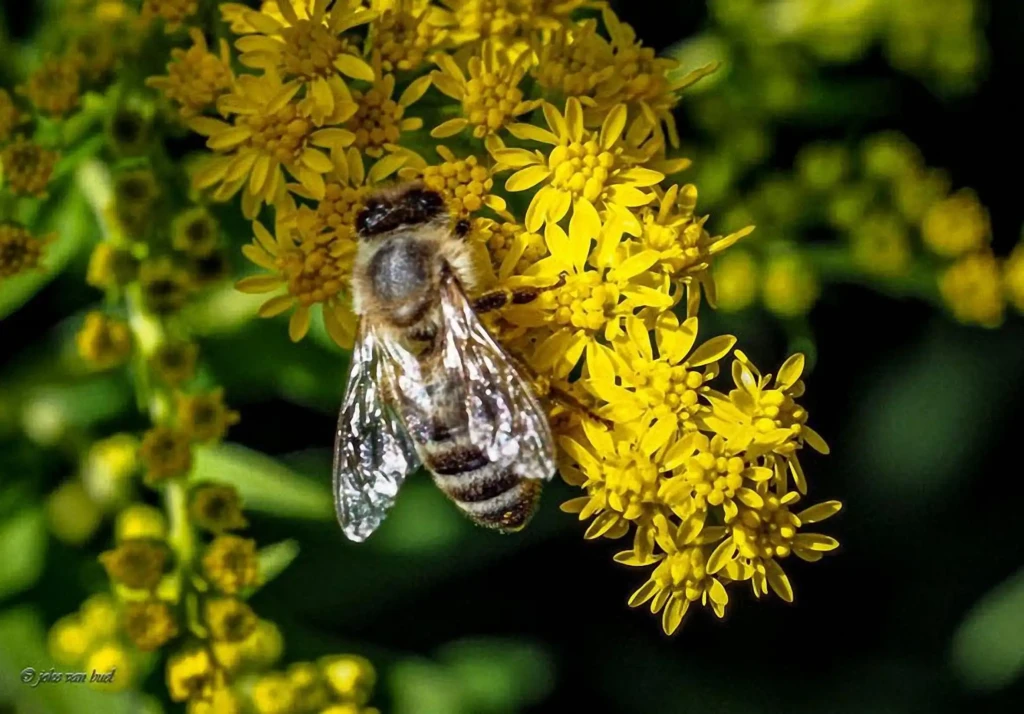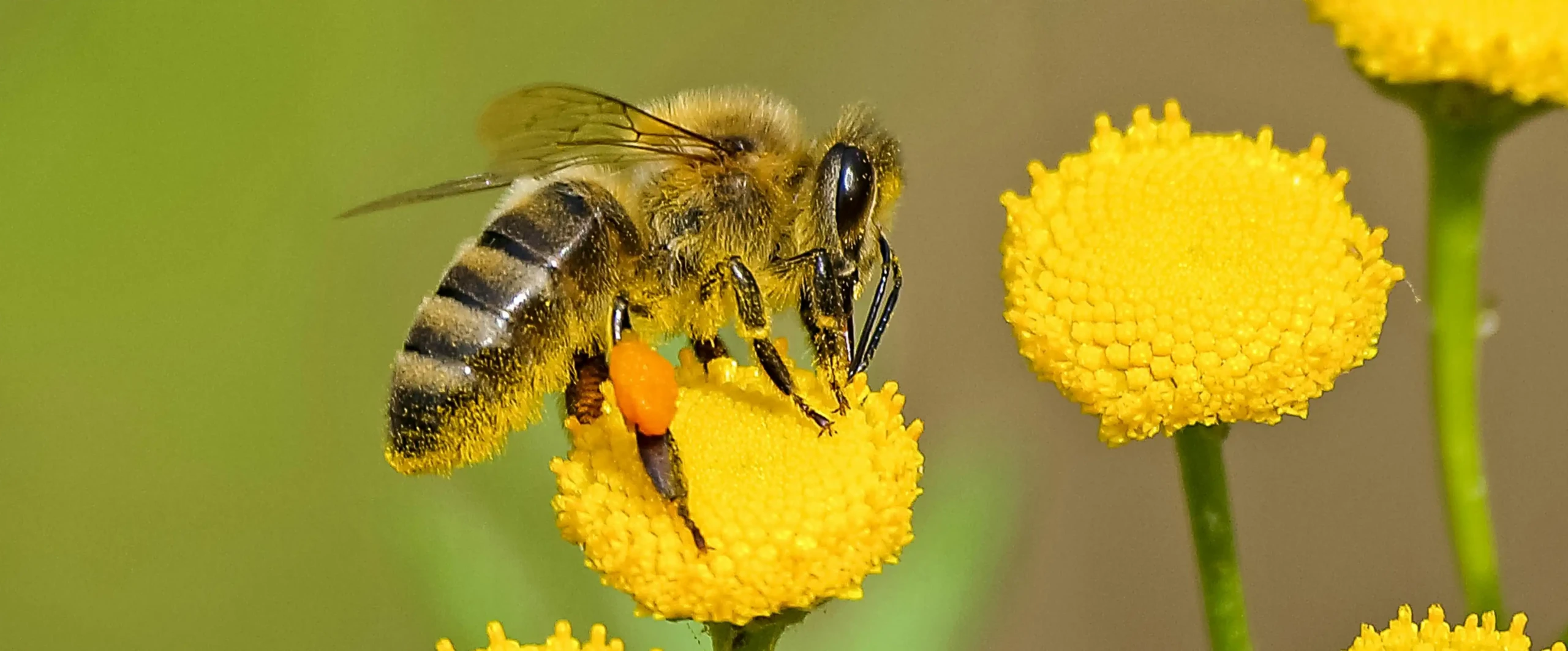Bees info
Bees info
Bees are winged insects closely related to wasps and ants, and are known for their crucial role in pollination and, in the case of the western honey bee, for the production of honey. There are more than 20,000 bee species spread across seven recognised families. Some bees, such as honey bees, bumblebees and stingless bees, live in social colonies, while the majority, more than 90%, live solitary, including species such as mason bees, carpenter bees, leafcutter bees and sweat bees.
Food
Bees feed on nectar and pollen, with nectar serving mainly as a source of energy and pollen as a source of protein and other nutrients, mainly for their larvae. Their natural predators include primates and birds such as bee-eaters, as well as insect predators such as dragonflies.
Pollination
Bees are the most important pollinators and essential to the biodiversity on which our lives depend. They provide valuable products such as honey, royal jelly, pollen and beeswax. The 2019 report by the Intergovernmental Science-Policy Platform on Biodiversity and Ecosystem Services (IPBES) highlights that sacred texts in all major world religions underline the important role of bees for human societies through the ages.
Beekeeping is also an important source of income for many people in rural areas. According to IPBES, the western honey bee is the most widely distributed managed pollinator worldwide, with more than 80 million hives producing about 1.6 million tonnes of honey annually.

Pollinators contribute directly to food security; according to experts from the United Nations Food and Agriculture Organisation (FAO), a third of the world’s food production depends on bees. When animals and insects spread pollen from flowers, plants, including many food crops, can reproduce. Although birds, rodents, monkeys and even humans also contribute to pollination, insects, including bees, are the most common pollinators.
Threats
Unfortunately, bees and other pollinators such as butterflies and hummingbirds are increasingly threatened by human activities. Bee populations have declined worldwide due to habitat loss, intensive agricultural practices, changing weather patterns and the overuse of agricultural chemicals such as pesticides. This threatens crucial plant species that are essential for human well-being and livelihood.
Air pollution also seems to affect bees. Preliminary research suggests that air pollutants interfere with the odour compounds emitted by plants, which bees use to find food. This leads to reduced efficiency in foraging and pollination.
Growing bees
Although most pollinators live in the wild, the massive breeding and transport of pollinators poses risks of transmission of pathogens and parasites. Better regulation of their trade could reduce the risk of unintended harm, according to the IPBES report.
Positive trend
However, there are also positive developments. In May 2018, the European Union maintained a partial ban on three neonicotinoid insecticides to reduce the threat to bees and the wider ecosystem. In addition, world leaders are meeting in August in Kunming, China, at the UN Biodiversity Conference (COP 15) to work on a post-2020 biodiversity framework, aiming, among other things, to reduce pesticides by at least two-thirds by 2030.
According to Marieta Sakalian, biodiversity specialist at the UN Environment Programme (UNEP), increasing crop diversity and habitat conservation can help mitigate climate change and promote biodiversity. Governments have a crucial role to play here.
World bee day
To draw attention to the importance of pollinators and their protection, the UN has declared 20 May as World Bee Day. The day coincides with the birthday of Anton Janša, a Slovenian pioneer of modern beekeeping in the 18th century, who praised bees for their hard work and low needs.

Bee, photo by Joke van Buel 🙂

